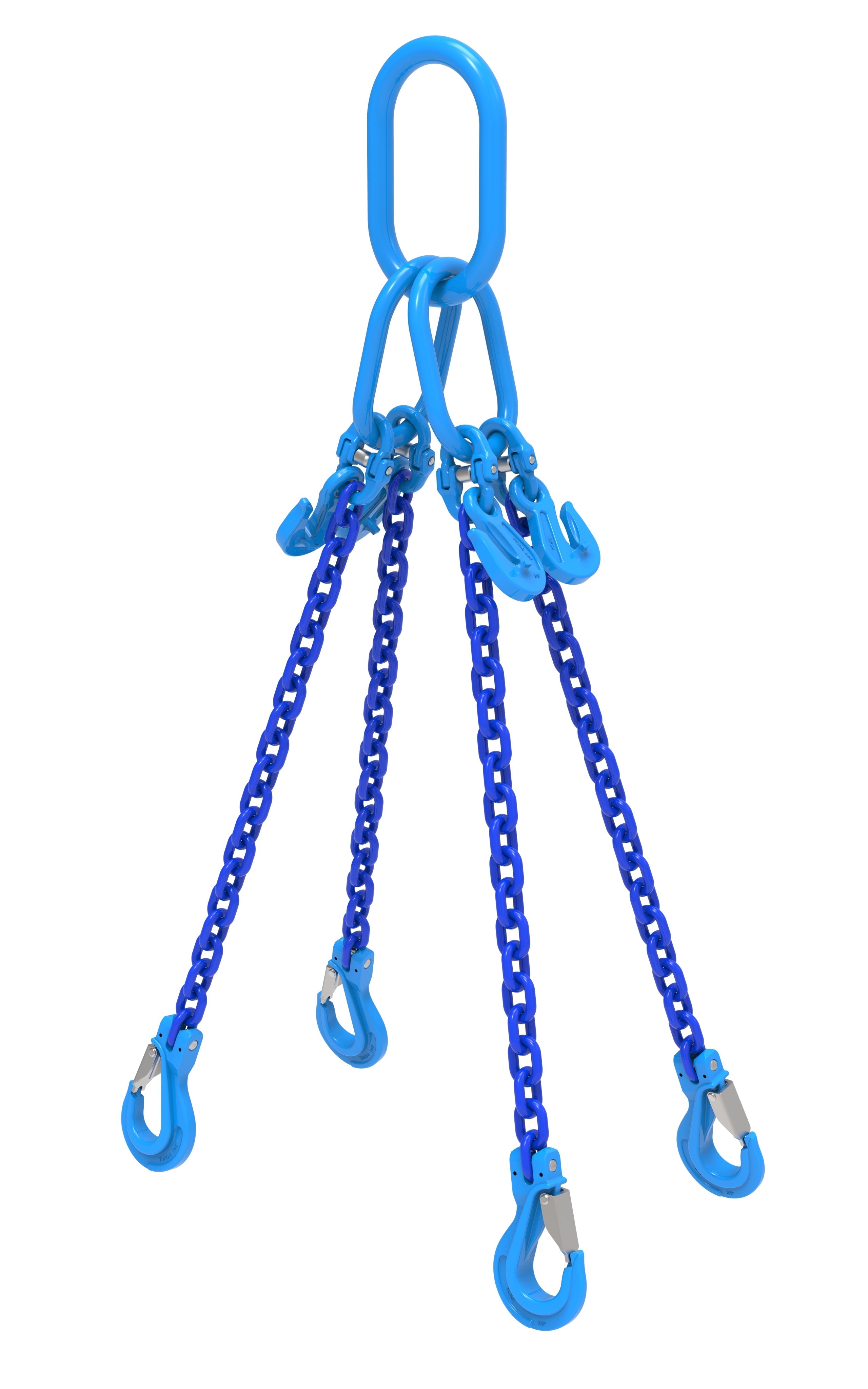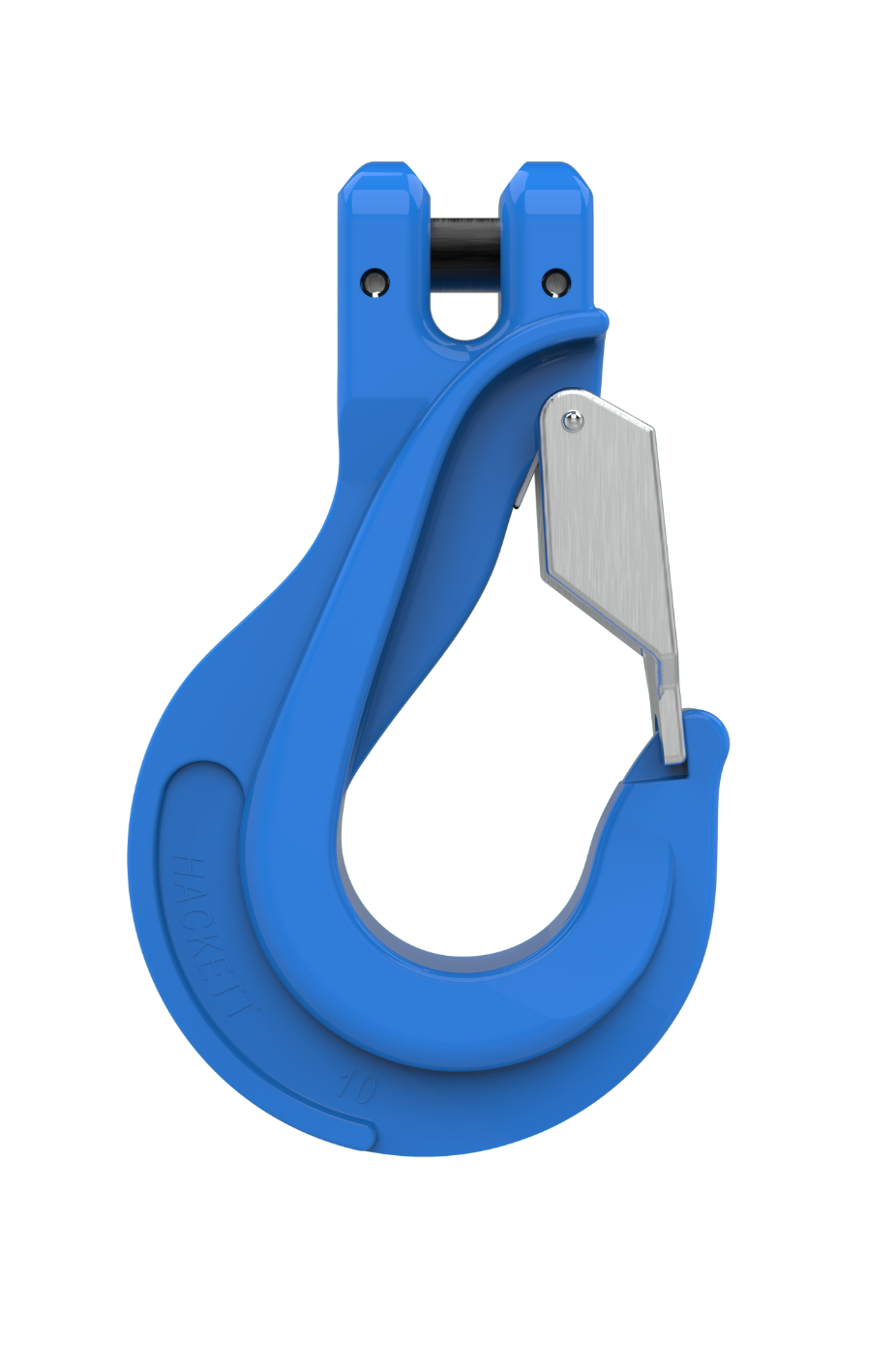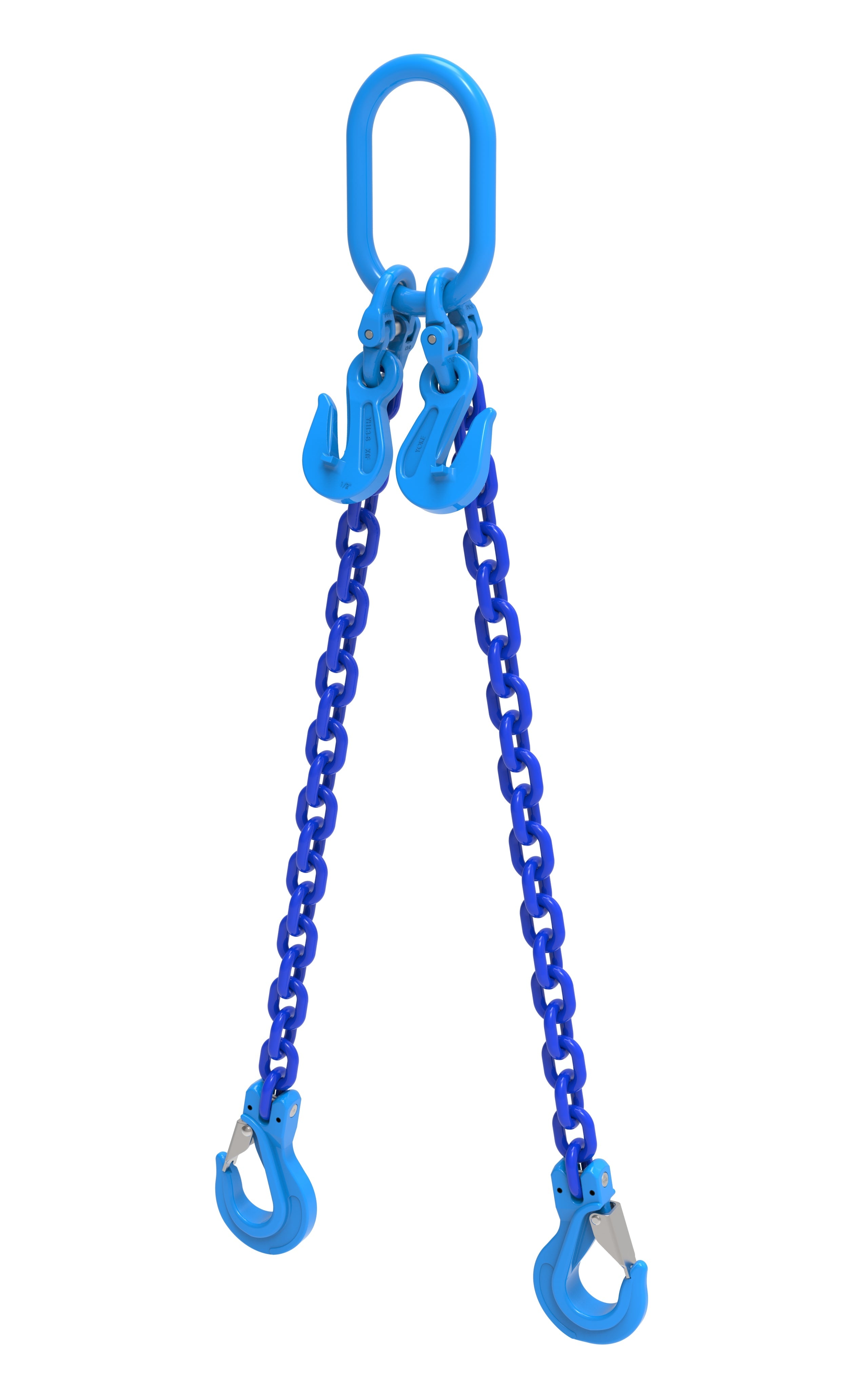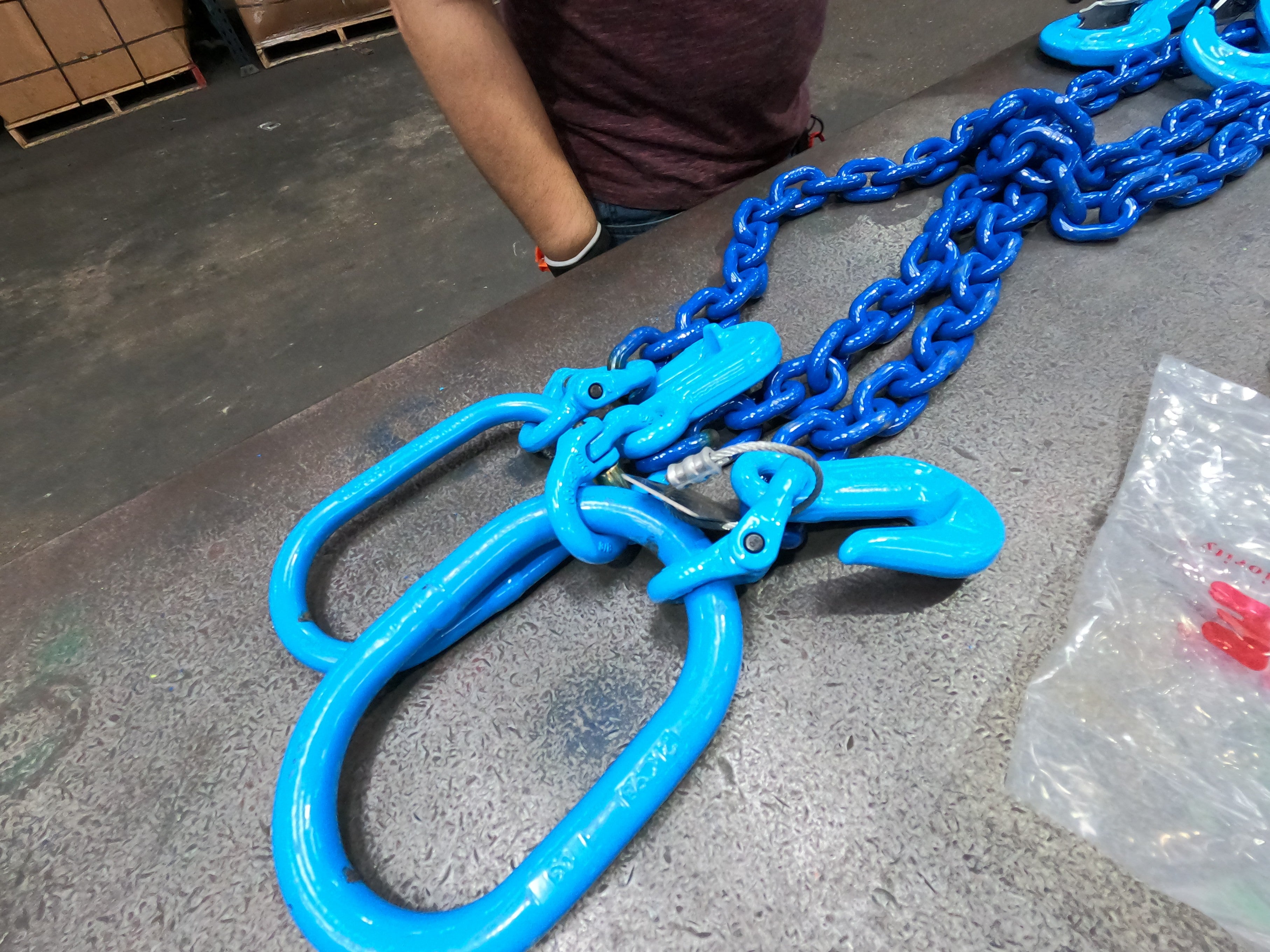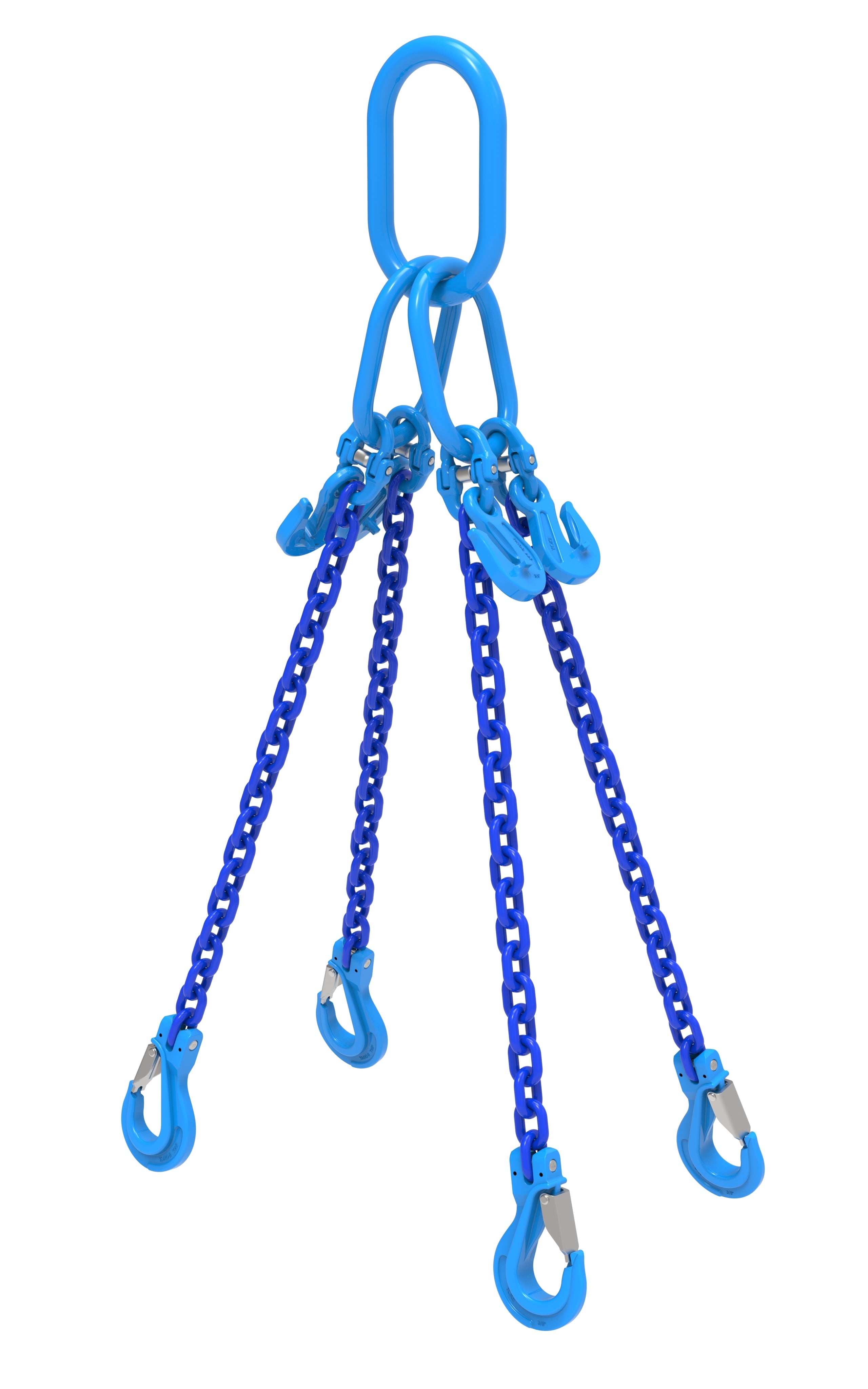Despite their wide adaptation and availability, Wire Rope Slings do have several drawbacks that need to be considered when using them:
1. Wire rope absorbs water quickly and this can decrease its strength significantly - so it is recommended that they are used in dry conditions only.
2. Hauling these beats around is a big deal in itself, they can be sharp and rigid often making them difficult to manipulate to store or carry. Our chains are smooth, easy to handle and compact when storing (although we always recommend hanging your chains after use where possible).
3. Wire Rope Slings cannot be adjusted or shortened in length, once crimped they are often sized for life. With an Adjustable Chain Sling you're able to fully adjust the length of each individual chain leg link-by-link without any mechanical intervention or re-testing required!
So now that you've explored the top 3 reasons to STOP using wires- it's a great time to check out our website and see what our big blue chains have to offer! And don't forget- every chain #ShipsToday
*Orders recieved before 10:30AM CST ship same day on your chosen service.
What are wire rope slings
Wire rope slings are an immensely useful tool for lifting, towing, and other tasks in a range of industries. Made from flexible strands of metal wires that have been woven and twisted together in an intricate pattern. The strength of the sling comes from its ability to keep the individual wires in tension, even when placed under great weight. This makes them ideal for use in industries such as construction, mining, oil and gas extraction, manufacturing plants, transportation and more. Wire Slings just like chains are also commonly used to hoist large loads during salvage operations or accident responses.
Other Wire Sling Essential Information:
Construction
A wire rope sling consists of three main components: the core of the rope, an outer jacket, and a thimble. The core is made up of strands of metal wires twisted together to form the rope. The jacket is a protective layer that helps prevent the inner core from becoming tangled or frayed. Lastly, the thimble is used to secure the rigging components, such as shackles and clips, to the sling. These components are all designed to work together in order for a wire rope sling to effectively and safely carry heavy loads. Often thimbles will get damaged which puts the sling out of service- when you use a chain sling if you damage a component it takes just minutes to replace and might not even require a trip to a rigging shop!
Can I repair a Wire Rope Sling?
Easily? No. Technically, yes. You can repair a wire rope sling but the process should be carried out by a professional, certified rope splicer. In order to repair the sling, it should first be inspected for any signs of wear and tear. If there are any issues with the slack or sheaves of the cable, it must be replaced. Additionally, worn areas must be cut away and terminations reapplied. Lastly, new wires may need to be added depending on the severity of the damage to ensure safe operation. Following this kind of a repair, a load test will need to be carried out.

